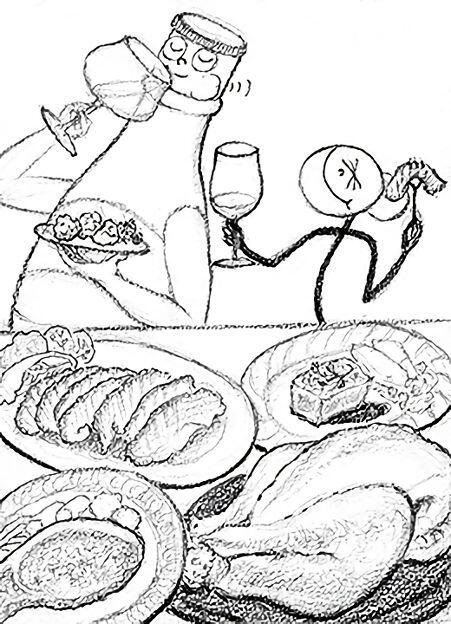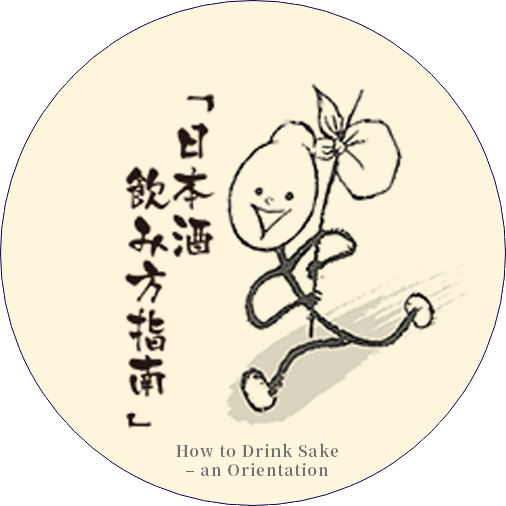| Yeast |
“I now want to study how to pair sake with food. It’s so difficult that it always causes me headaches!” |
| Kimoto |
“Alright. Instead of immediately talking about dishes, let’s start with the ingredients. Yeast, what do you prefer, meat or fish?” |
| Yeast |
“Meat of course!” |
| Kimoto |
“I get it. People often say that red wine fits to meat and white wine to fish. Sake is generally regarded as suitable for fish, but Daishichi’s powerful sakes of course also fit to meat dishes.” |
| Yeast |
“I’m happy to hear that! To which meat does Daishichi fit?” |
| Kimoto |
“There are various types of meat, from the lean meat of chicken breast to chicken thigh with some fat and to red and rich duck meat. In the case of pork, we have tenderloin with little fat and deep-tasting sirloin with more fat. In the case of beef, we have juicy red meat and rich and soft marbled beef. And we also have game meat as deer and wild boar.” |
| Yeast |
“You’re right! Meat has a wide range from lean to firm and rich-tasting.” |
| Kimoto |
“On top of that, the condiments used vary from fresh ones as salt and lemon, to items with umami as soy sauce, and also even richer ones with a deeper taste, or spicy items with red pepper. When you take both the types of meat and types of condiments into account, there is a huge variation.” |
| Yeast |
“Hmm, that sounds rather difficult.” |
| Kimoto |
“Don’t worry. The basic rule is to pair lighter sakes with lighter meat and stronger tasting sakes with richer meat. The condiments function as facilitators between the two. For a detailed discussion see the study about the pairing of sake and food by Masazumi Watanabe.” |
|
 |
| Yeast |
“Let’s start with a lean taste, for example chicken breast. For example, sprinkled with starch and lightly grilled, with a seasoning of ponzu vinegar.” |
| Kimoto |
“I would say that Honjozo Kimoto would be a great match, as it has a clean taste with some umami.” |
| Yeast |
“What about my favorite dish, the ever popular deep-fried chicken thigh (karaage)? |
| Kimoto |
“Deep-fried chicken has a juicy and deep taste, so I advise Junmai Kimoto with its firm umami. It can be enjoyed both cold and warm.” |
| Yeast |
“We go on! Next comes roast duck, with red wine sauce.” |
| Kimoto |
“Um, that’s rather rich. Try a pairing with Minowamon, our junmai daiginjo with a rich aroma and elegant umami.” |
| Yeast |
“I see! Next is pork. What about a dish with boiled pork with a generous amount of grated daikon radish as condiment?” |
| Kimoto |
“That’s again a lighter taste. But as the meat has its natural umami, I think Junmai Kimoto or Kaiden (Masakura), out junmai ginjo, would be best.” |
| Yeast |
“Now we come to beef. What sake would fit to roast beef which allows you to taste the deliciousness of red meat?” |
| Kimoto |
“Well… I advise Junmai Kimoto ‘Yamada Nishiki,’ which has a robust umami. Normally a ginjo-type sake would be unsatisfactory, but in the case of Daishichi a thoroughly matured kimoto junmai daiginjo would also be suitable.” |
| Yeast |
“Finally, what is your suggestion for shabu-shabu of umami-rich marbled beef?” |
| Kimoto |
“Either Rakutenmei, our thoroughly matured, junmai sake brewed in wooden vats, or Junmai Kimoto Classic. These should be drunk warm, so that they can refresh you by washing away the fat of the meat.” |
| Yeast |
“I’m excited by all these delicious pairings! If only I would get the knack of it, I could also become skillful!” |





